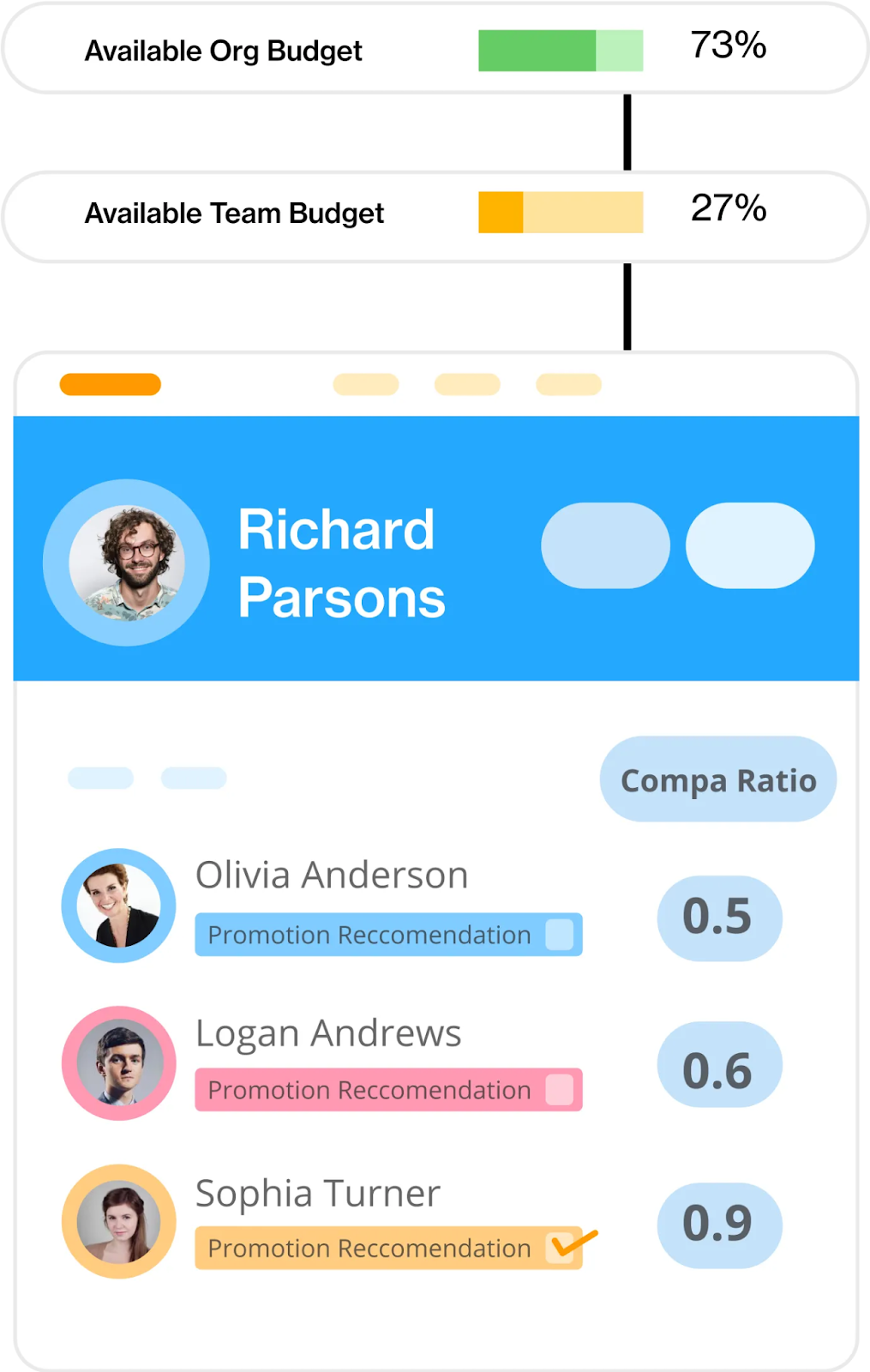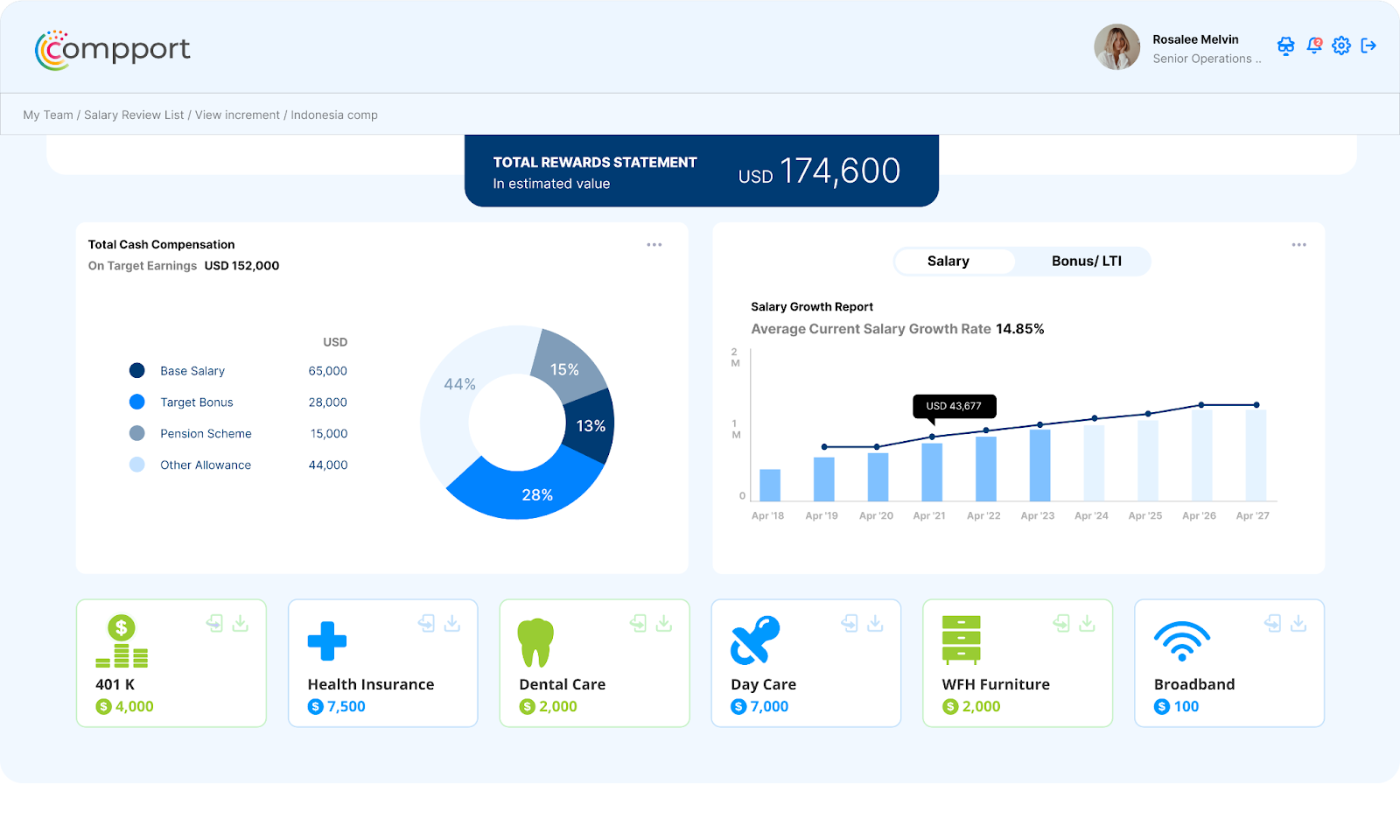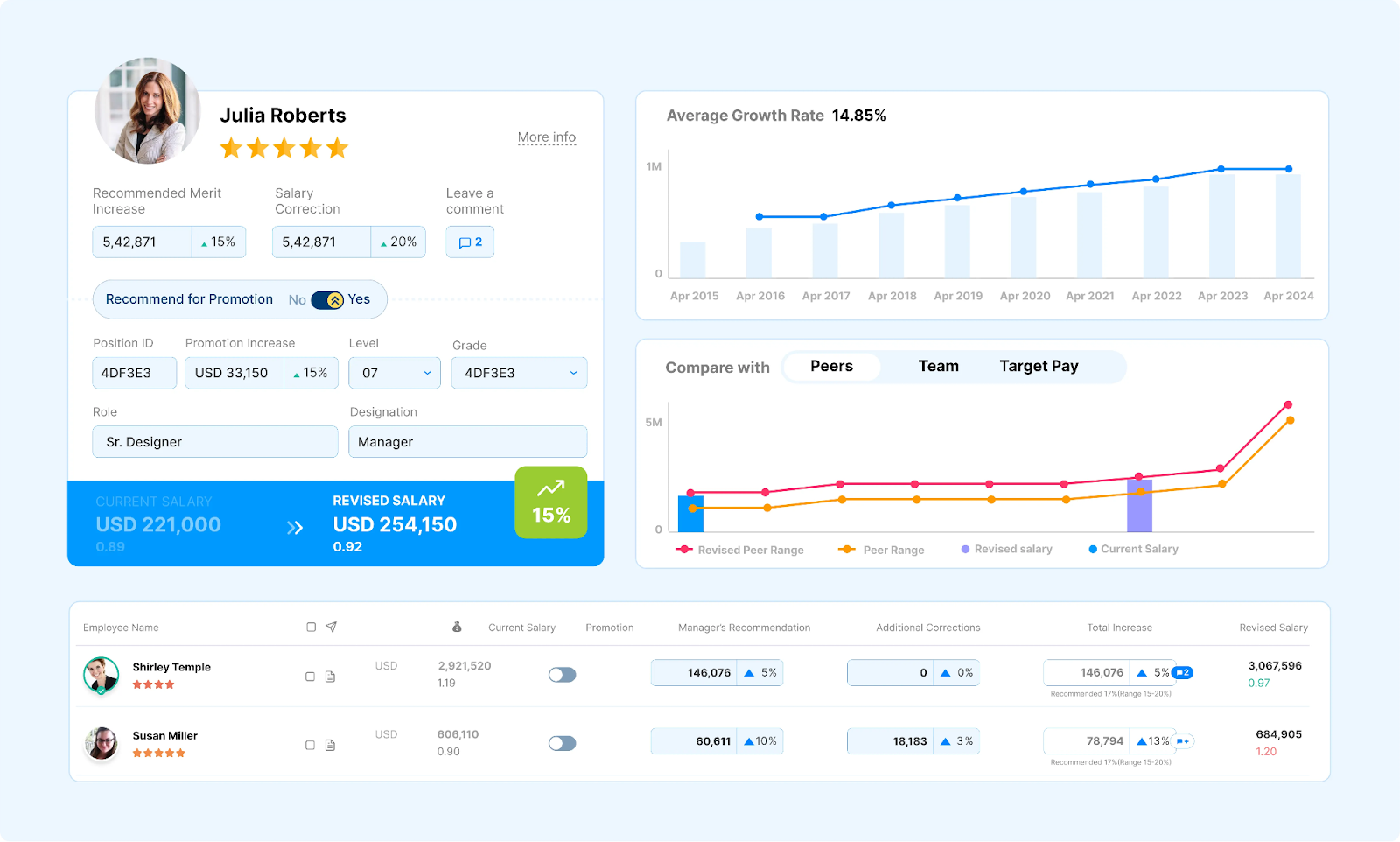How to Negotiate Salary When Given a Range? (Tips for HR and Comp Teams)
%20(27).png)
Picture this: You post a job with a "$70-90K range" thinking you're being transparent, but your candidate immediately fixates on that $90K number. Meanwhile, you're planning to start around $72K and hoping they'll be reasonable about it.
This disconnect happens in your hiring process right now, and honestly, it's creating unnecessary friction for everyone.
We've been analyzing real negotiation stories from hiring managers, compensation professionals, and candidates, and the patterns are both fascinating and frustrating. Some HR teams handle these conversations efficiently, while others end up in bidding wars or lose great candidates, and most are just winging it without a clear strategy.
When you post a salary range, you're inviting negotiation. But HR and Rewards teams aren't always prepared for what comes next.
They haven't thought through their anchoring strategy, they lack scripts for common objections, and they certainly haven't considered how a single negotiation might impact their entire compensation structure.
But here's what we've learned: when you understand the game, everybody wins.
Here are five tips on how to negotiate salary when given a range as an HR and Rewards leader.
5 Tips to Negotiate Salary When a Range is Given
You've posted the salary range, the candidate is interested, and now comes the tricky part: negotiating within that framework you've created.
This isn't just about finding a number both sides can live with—it's also about maintaining internal pay equity, protecting your budget, and still creating a candidate experience that makes people want to work for you.
These ten strategies will help you navigate everything from that first offer conversation to handling counteroffers and knowing when to walk away.
#1 Set guardrails before salary negotiations begin
Before you even post that salary range, get explicit approval on your actual maximum. Not just the range maximum, but the "we absolutely cannot go above this" number. This will ensure that you don’t get caught off guard when a strong candidate counters at the top of the range.
Three key guardrails to establish:
- Your true ceiling: If your posted range is $ 70,000-$ 90,000, what's your actual maximum? It could be $ 92,000 with director approval, but $ 95,000 requires VP sign-off. Know these numbers before you start.
- Internal equity boundaries: How does this role compare to existing employees? If you pay a new hire $88K, will current team members at $82K need adjustments? Factor this into your real budget.
- Non-salary flexibility limits: What can you offer beyond base pay? Are signing bonuses pre-approved up to a certain amount? Can you add vacation days? Know your options.
This is where platforms like Compport's Compensation Module become invaluable. Instead of scrambling through email chains for approvals, you can set these guardrails directly in the system.
The platform allows you to define approval workflows, set equity alerts, and even incorporate automatic checks against internal pay bands. When a hiring manager wants to offer above the preset limits, the system flags the request and automatically routes it to the correct approvers.

#2 Lead with transparency about how you arrived at the range
When candidates ask about placement within your range, don't just say, "it depends on experience." Be specific about what factors matter:
- Years of experience
- Specific skills
- Education
- Previous performance in similar roles
- Internal equity considerations.
"It's not enough to say, 'This is your range.' Managers need to explain why someone is at 80% of it and not 95%," explains Poonam Khatwani, Compensation & Benefits Director at Hitachi Rail.
Three ways to build transparency:
- Create placement criteria: Document precisely what moves someone from the 25th percentile to the 75th percentile of your range. Is it years of experience? Specific certifications? Leadership background? Make it clear and consistent.
- Use specific examples: Instead of vague responses, give concrete explanations. "You're at $75K because you have 3 years of experience, which is our midpoint. The top of the range requires 5+ years plus specialized certifications."
- Address the "why not more" question proactively: Don't wait for candidates to ask. Explain upfront: "I want to walk you through how we arrived at this number and what factors could move it higher."
Script this out for your managers. Here is a quick template 👇
This transparency doesn't weaken your position—it strengthens it. Candidates respect honesty and are more likely to accept offers when they understand the reasoning behind them.
Not sure how to create a salary range? You can use a salary range builder:
#3 Focus on your total compensation story
Most candidates focus solely on base salary, but you control the entire compensation narrative.
"People respond better when you say: 'Based on the market median and my experience in X and Y, I believe a better fit would be...' That feels informed, not entitled," shares Krish Shankar, Ex-CHRO at Infosys.
Three ways to master your total comp story:
- Calculate the real dollar value: Don't just list benefits—quantify them. "6% 401k match" becomes "$4,800 annually." "Fully covered health premiums" becomes "$12,000 value per year." Make it concrete.
- Present it as a cohesive narrative: Instead of rattling off a checklist, tell the complete story. "While we're at our maximum for base salary at $80K, your total compensation package is effectively $95K+ when you factor in our benefits."
- Address their specific concerns: If they're worried about student loans, highlight your education reimbursement program. If they mention work-life balance, emphasize flexible PTO and remote work options.
Compport's Total Rewards Statement can be game-changer here. Instead of manually calculating benefit values or creating static PDFs, you can generate personalized compensation statements that show candidates exactly what their total package is worth.

Here is a quick walkthrough of the platform:
The platform automatically calculates everything, from equity values to benefit costs, providing a professional and comprehensive view that candidates can actually understand.
Document everything your company offers and present it as a cohesive story, not just a list. This transparency doesn't weaken your position—it strengthens it by helping candidates make informed decisions.
#4 Expect counteroffers and stay flexible within limits
Plan for negotiation. When you make an offer, mentally prepare for candidates to counter. Most strong candidates will—it's a sign they're taking the role seriously and understand their value in the market.
Three response strategies to prepare:
- Have your flexibility framework ready: Know precisely what you can adjust before the conversation starts. Can you add $3K to the base but not $5K? Is a signing bonus easier to approve than a salary? Map out your options in advance.
- Prepare deflection scripts for competing offers: Don't immediately try to match numbers. Instead, ask: "I'd love to understand what's important to you beyond base salary," or "Help me understand what would make this the right opportunity for you."
- Keep alternative levers accessible: Signing bonuses, extra PTO, earlier salary reviews, title adjustments, professional development budgets. These often cost less than salary increases but can effectively close the gap.
Stay collaborative while maintaining your boundaries. You're not trying to "win" against the candidate—you're trying to find a solution that works for both sides.
#5 Address internal equity proactively
Picture this: someone on your team casually mentions over coffee that the new hire is making $5K more than they are for the same role. These situations create lasting resentment and legal risk that can haunt you for years.
Before making any offer above your typical range, consider how it will impact your existing team. The excitement of landing a great candidate can make you forget about the people already on payroll, but they're the ones who'll be working alongside this person every day.
Three steps to protect internal equity:
- Run the comparison before making offers: Ask yourself, "How does this compare to current employees in similar roles?" If there's a gap, you need to either adjust existing employees or have a clear rationale for the difference.
- Document your reasoning clearly: "This candidate brings specialized skills in X that we don't currently have on the team," or "This represents a market adjustment we'll be implementing company-wide." Write it down—you'll need it later.
- Use data to support your decisions: Don't rely on gut feelings about what's fair. Use actual market data and internal benchmarks to justify any differences in pay.
This is where Compport's Pay Equity Management module becomes essential.
Instead of manually comparing spreadsheets and hoping you caught all the equity issues, the platform automatically flags potential disparities when you're making offers.
It shows you exactly how a new hire's compensation compares to existing employees in similar roles, levels, and locations. You can see potential equity gaps before they become problems, not after someone discovers them in a casual conversation.

Being proactive about equity prevents bigger problems later. It's much easier to address these concerns during the offer process than to explain them to an angry employee six months later.
What’s Next?
Salary negotiation doesn't have to be adversarial. When you approach it with transparency, preparation, and genuine respect for candidates, you create better experiences and stronger outcomes for everyone involved.
The goal isn't to "win" against candidates—it's to find fair agreements that help great people join your team while protecting your company's compensation philosophy and budget constraints. However, managing all these moving pieces manually becomes complex quickly.
That's where having an integrated compensation management platform becomes invaluable. Instead of juggling spreadsheets for equity analysis, manually calculating total rewards statements, and scrolling through email chains for approvals, you can streamline the entire process in one place with Compport.
This is how the Compport dashboard will look like:

Want to explore Compport?

FAQs
How to Negotiate Salary When Given a Range?
To negotiate salary as an HR manager, set clear guardrails before posting ranges. Know your actual ceiling, prepare transparency scripts about placement methodology, and focus on total compensation storytelling. Use data to justify offers and address internal equity proactively throughout the process.
How to Ask for a Pay Range Policy?
As HR, you should proactively share ranges: "This role is budgeted at $70-90K, depending on experience" during initial conversations. Don't wait for candidates to ask - transparency builds trust and saves time for both parties.
What is a common mistake to avoid during salary negotiation?
Don't make offers without first setting internal guardrails. Scrambling for approvals mid-negotiation looks unprofessional and can create equity issues. Know your actual ceiling, approval requirements, and alternative compensation levers before starting any salary discussion.



%20(22).png)
%20(21).png)
